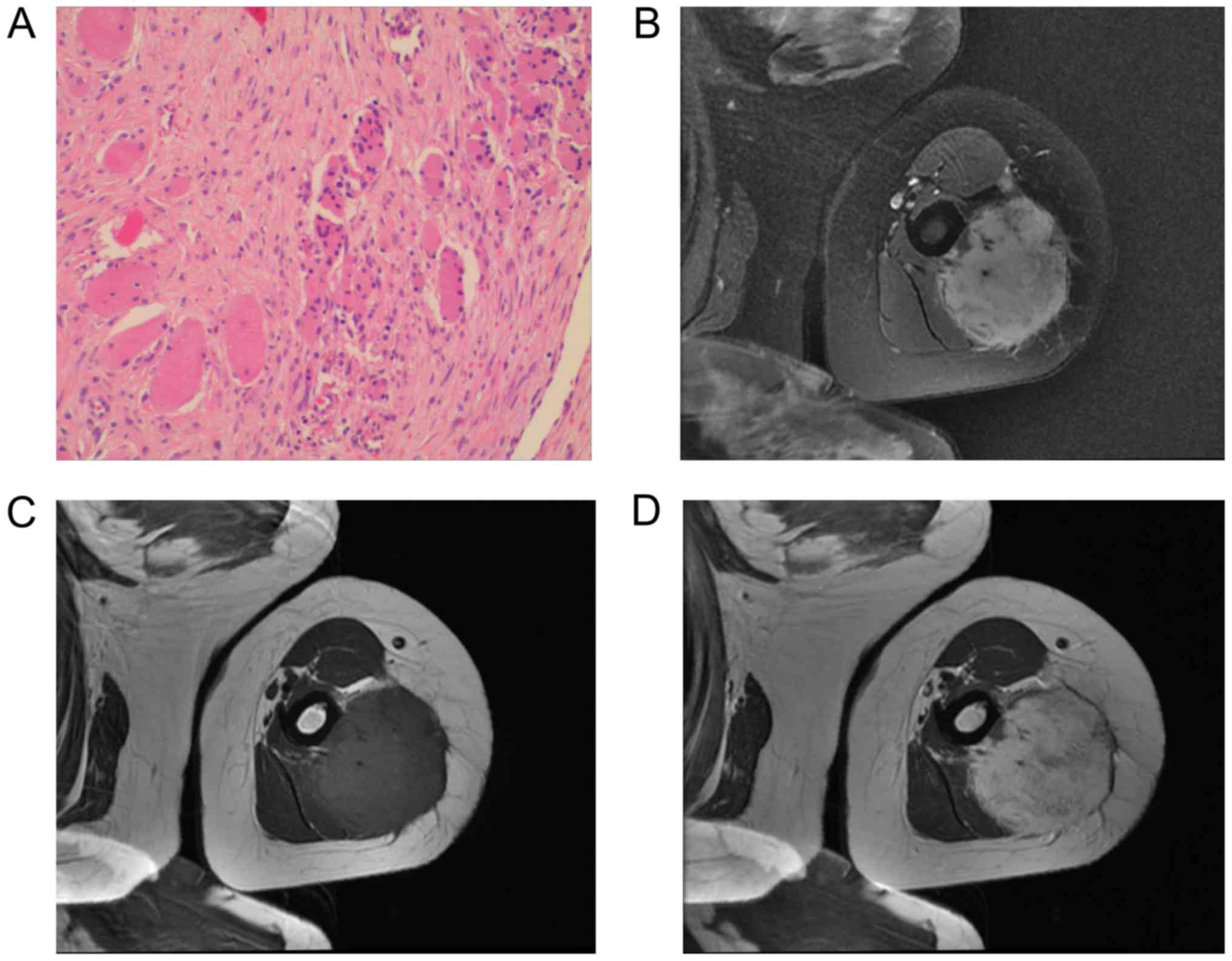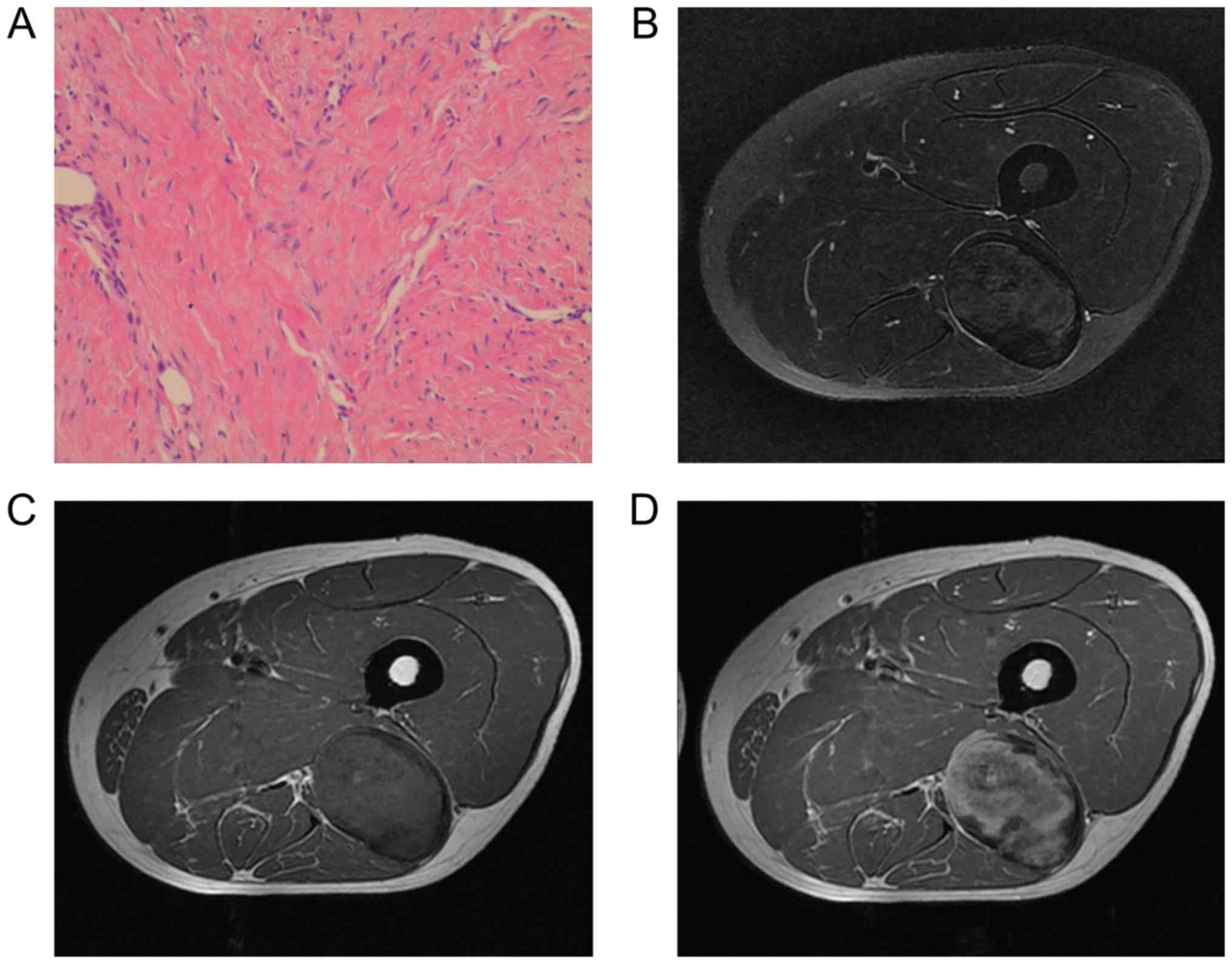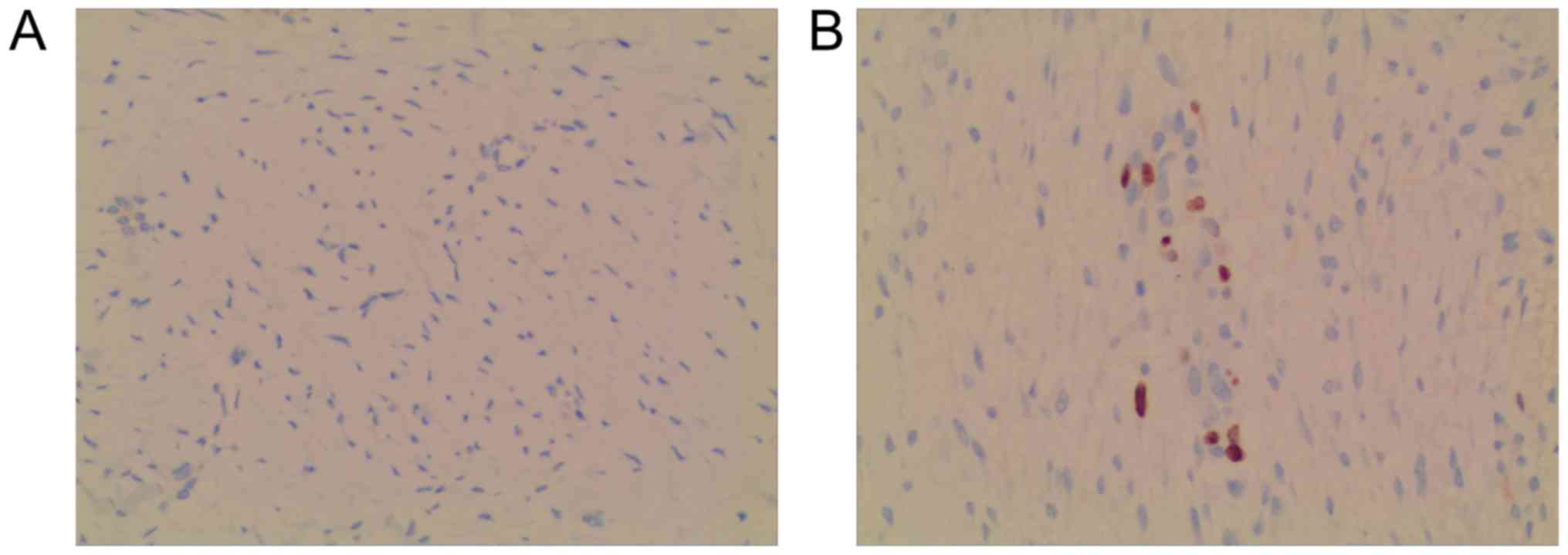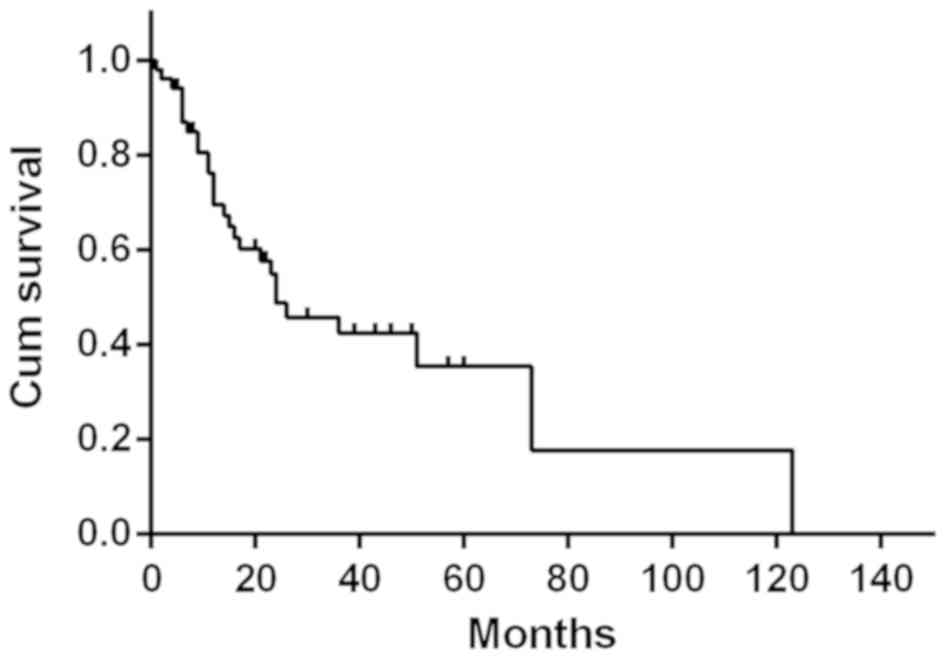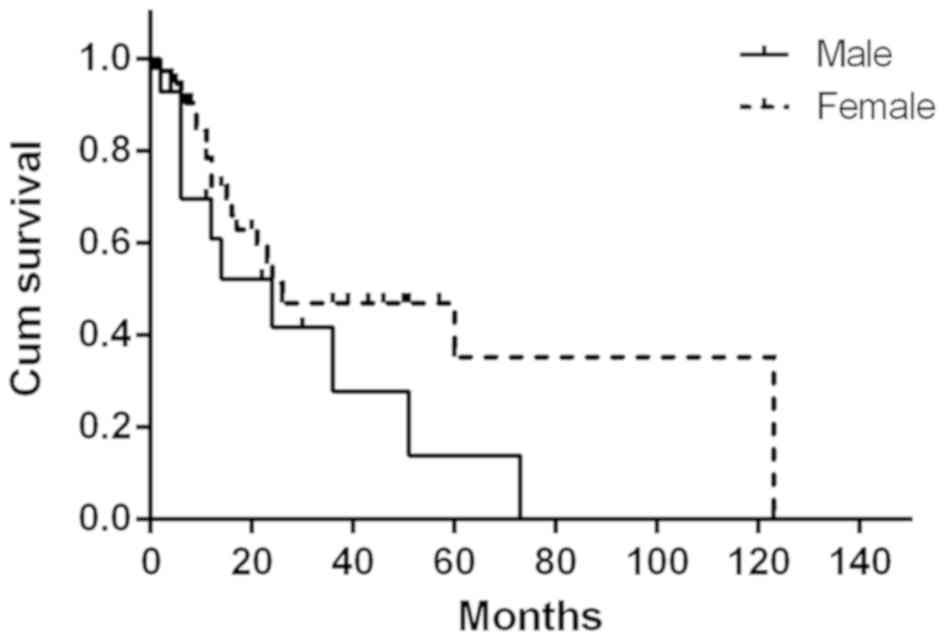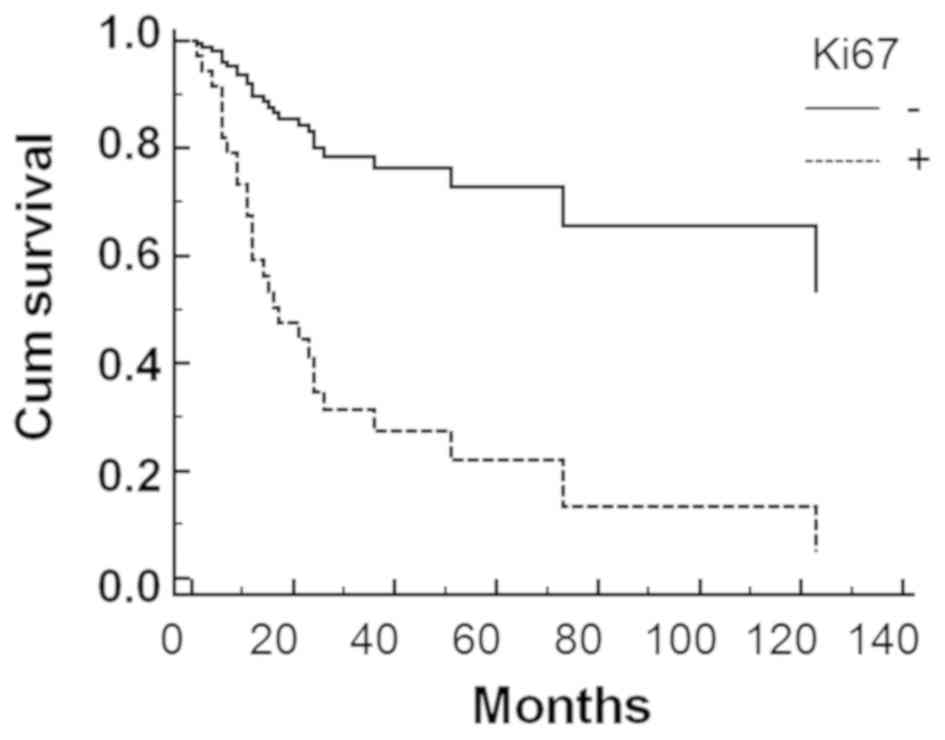|
1
|
Fletcher CDM: WHO classification of
tumours of soft tissue and bone/[M]//WHO classification of tumours
of soft tissue and bone. IARC Press; pp. 95–104. 2013
|
|
2
|
Teixeira LE, Arantes EC, Villela RF,
Soares CB, Costa RB and Andrade MA: Extra-abdominal desmoid tumor:
Tocal recurrence and treatment options. Acta Ortop Bras.
24:147–150. 2016. View Article : Google Scholar : PubMed/NCBI
|
|
3
|
Kuhnen C, Helwing M, Rabstein S, Homann HH
and Müller KM: Desmoid-type fibromatosis (aggressive fibromatosis).
Pathologe. 26:117–126. 2005.(In German). View Article : Google Scholar : PubMed/NCBI
|
|
4
|
de Bree E, Keus R, Melissas J, Tsiftsis D
and van Coevorden F: Desmoid tumors: Need for an individualized
approach. Expert Rev Anticancer Ther. 9:525–535. 2014. View Article : Google Scholar
|
|
5
|
Penel N, Coindre JM, Bonvalot S, Italiano
A, Neuville A, Le Cesne A, Terrier P, Ray-Coquard I, Ranchere-Vince
D, Robin YM, et al: Management of desmoid tumours: A nationwide
survey of labelled reference centre networks in France. Eur J
Cancer. 58:90–96. 2016. View Article : Google Scholar : PubMed/NCBI
|
|
6
|
Gronchi A, Colombo C, Le Péchoux C, Dei
Tos AP, Le Cesne A, Marrari A, Penel N, Grignani G, Blay JY, Casali
PG, et al: Sporadic desmoid-type fibromatosis: A stepwise approach
to a non-metastasising neoplasm-a position paper from the Italian
and the French Sarcoma Group. Ann Oncol. 25:578–583. 2014.
View Article : Google Scholar : PubMed/NCBI
|
|
7
|
Sugrue JJ, Cohen SB, Marshall RM and Riker
AI: Palliative resection of a giant mesenteric desmoid tumor.
Ochsner J. 15:468–472. 2015.PubMed/NCBI
|
|
8
|
Chaudhary P: Mesenteric fibromatosis. Int
J Colorectal Dis. 29:1445–1451. 2014. View Article : Google Scholar : PubMed/NCBI
|
|
9
|
Jenayah AA, Bettaieb H, Saoudi S, Gharsa
A, Sfar E, Boudaya F and Chelli D; Desmoid tumors, : Clinical
features and treatment options: A case report and a review of
literature'. Pan Afr Med J. 21:932015. View Article : Google Scholar : PubMed/NCBI
|
|
10
|
Weschenfelder W, Lindner R, Spiegel C,
Hofmann GO and Vogt M: Desmoid tumor of the popliteal fossa during
pregnancy. Case Rep Surg. 2015:2626542015.PubMed/NCBI
|
|
11
|
Kim YW, Choi SJ, Jeon UB and Choo KS:
Retroperitoneal fibromatosis presenting as a presacral mass. Acta
Radiol Short Rep. 3:20479816145237602014.PubMed/NCBI
|
|
12
|
Xu H, Koo HJ, Lim S, Lee JW, Lee HN, Kim
DK, Song JS and Kim MY: Desmoid-type fibromatosis of the thorax:
CT, MRI, and FDG PET characteristics in a large series from a
tertiary referral center. Medicine (Baltimore). 94:e15472015.
View Article : Google Scholar : PubMed/NCBI
|
|
13
|
Fiore M, Rimareix F, Mariani L, Domont J,
Collini P, Le Péchoux C, Casali PG, Le Cesne A, Gronchi A and
Bonvalot S: Desmoid-type fibromatosis: A front-line conservative
approach to select patients for surgical treatment. Ann Surg Oncol.
16:2587–2593. 2009. View Article : Google Scholar : PubMed/NCBI
|
|
14
|
Basha MS, Dutt SC, Murthy SN and Syed G:
Juvenile fibromatosis of the temporomandibular joint: A rare case
report. Dent Res J (Isfahan). 11:284–287. 2014.PubMed/NCBI
|
|
15
|
Salas S, Dufresne A, Bui B, Blay JY,
Terrier P, Ranchere-Vince D, Bonvalot S, Stoeckle E, Guillou L, Le
Cesne A, et al: Prognostic factors influencing progression-free
survival determined from a series of sporadic desmoid tumors: A
wait-and-see policy according to tumor presentation. J Clin Oncol.
29:3553–3558. 2011. View Article : Google Scholar : PubMed/NCBI
|
|
16
|
Efthimiopoulos GA, Chatzifotiou D,
Drogouti M and Zafiriou G: Primary asymptomatic desmoid tumor of
the mesentery. Am J Case Rep. 16:160–163. 2015. View Article : Google Scholar : PubMed/NCBI
|
|
17
|
Ali R, Parthiban N and O'Dwyer T: Desmoid
fibromatosis of submandibular region. J Surg Tech Case Rep.
6:21–25. 2014. View Article : Google Scholar : PubMed/NCBI
|
|
18
|
Reitamo JJ, Häyry P, Nykyri E and Saxén E:
The desmoid tumor. I. Incidence, sex-, age- and anatomical
distribution in the Finnish population. Am J Clin Pathol.
77:665–673. 1982. View Article : Google Scholar : PubMed/NCBI
|
|
19
|
van Broekhoven DL, Grünhagen DJ, den
Bakker MA, van Dalen T and Verhoef C: Time trends in the incidence
and treatment of extra-abdominal and abdominal aggressive
fibromatosis: A population-based study. Ann Surg Oncol.
22:2817–2823. 2015. View Article : Google Scholar : PubMed/NCBI
|
|
20
|
Bn A, Cd JK, Ps S, M M and Urs R: Giant
aggressive mesenteric fibromatosis-a case report. J Clin Diagn Res.
9:PD07–PD08. 2015.PubMed/NCBI
|
|
21
|
Briand S, Barbier O, Biau D,
Bertrand-Vasseur A, Larousserie F, Anract P and Gouin F:
Wait-and-see policy as a first-line management for extra-abdominal
desmoid tumors. J Bone Joint Surg Am. 96:631–638. 2014. View Article : Google Scholar : PubMed/NCBI
|
|
22
|
Cates JM: Pregnancy does not increase the
local recurrence rate after surgical resection of desmoid-type
fibromatosis. Int J Clin Oncol. 20:617–622. 2015. View Article : Google Scholar : PubMed/NCBI
|
|
23
|
Cates JM, Stricker TP, Sturgeon D and
Coffin CM: Desmoid-type fibromatosis-associated Gardner fibromas:
Prevalence and impact on local recurrence. Cancer Lett.
353:176–181. 2014. View Article : Google Scholar : PubMed/NCBI
|
|
24
|
Yang JL, Wang J, Zhou XY, Li XQ, Hou YY
and Zhu XZ: Clinicopathologic and genetic studies of desmoid-type
fibromatosis. Zhonghua Bing Li Xue Za Zhi. 35:145–150. 2006.(In
Chinese). PubMed/NCBI
|
|
25
|
Wang YF, Guo W, Sun KK, Yang RL, Tang XD,
Ji T and Tang S: Postoperative recurrence of desmoid tumors:
Clinical and pathological perspectives. World J Surg Oncol.
13:262015. View Article : Google Scholar : PubMed/NCBI
|
|
26
|
Prodinger PM, Rechl H, Keller M, Pilge H,
Salzmann M, von Eisenhart-Rothe R and Holzapfel BM: Surgical
resection and radiation therapy of desmoid tumours of the
extremities: Results of a supra-regional tumour centre. Int Orthop.
37:1987–1993. 2013. View Article : Google Scholar : PubMed/NCBI
|
|
27
|
Kim SJ, Ha DH, Lee SM and Kang H: Desmoid
type fibromatosis in the facet joint of lumbar spine: Case report
and review of literature. Korean J Radiol. 14:818–822. 2013.
View Article : Google Scholar : PubMed/NCBI
|















